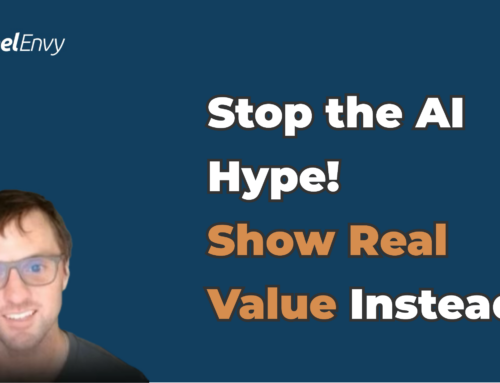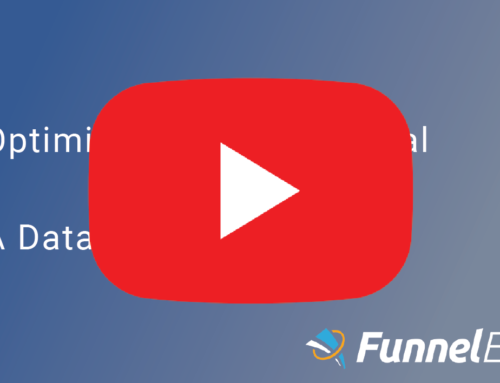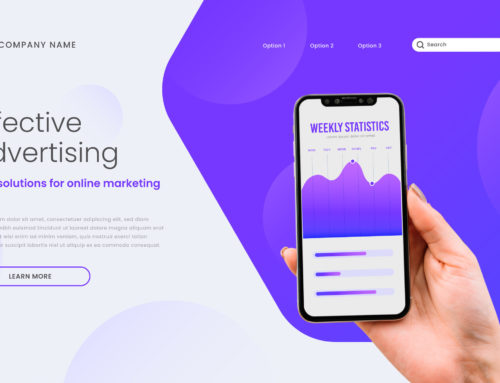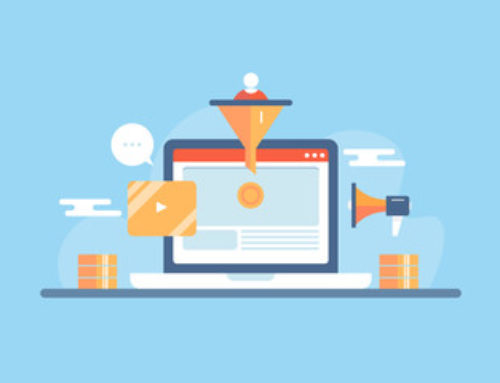A/B testing suffers from a “winner take all” problem whereby it optimizes a single experience across an entire population and does not take context into account.
A better solution for optimizing experiences across the wide variety of visitor context is predictive optimization. It works by using bringing together all of the data about the visitor into a Unified Customer Profile (UCP), continuously optimizing with each impression and using a predictive model to identify the experience that’s most likely to result in onsite and down-funnel outcomes on a 1:1 basis.
Homepage Personalization
The homepage is often one of the most highly trafficked pages, usually with a high volume of direct and organic (branded) search traffic. As a result, it generally has pretty generic top of the funnel content and often serves as a “traffic cop” – funneling visitors to the sections of the site with more specific content.
Hero with no context about customer intent
What if instead of the headline, copy and CTA we could replace it with something that better reflected the visitor’s intent?
Intent: Learn about Localytics for IOS
Intent: Try Discover Platform
Intent: Interested in Localytics CRM
Content Personalization
Localytics also has an extensive resource collection of case studies, ebooks, whitepapers, and webinars. The featured content in the slider is prime real estate to showcase personalized content.
Intent: Looking for Social Proof
Intent: Decision Maker Learning for Media Industry Stats
The important part to remember here is we are matching the content to the customer context.
Down-Funnel Personalization
After a visitor is identified as in the target market and has shown some commercial intent, marketers must continue personalizing. In B2B that often means that they’ve returned to the site and engaged with more commercially oriented content, and likely filled out a gated content form. That could also mean that multiple visitors have come to the site from the same account.
We want to continue to provide these visitors with relevant content that continues to engage them, but also give them on-ramps to take the next step.
In Localytics’s case, this “next best action” is either starting the free trial or talking to sales. Since we may also have information about the visitor’s account and role we can incorporate that into the experience and call to action. For example, we may want Marketing Decision Makers to Talk to Sales.
Intent: Ready to Engage with Sales
If the visitor is an engaged decision maker we can present them with more specific content and a CTA that takes them directly to a Contact Sales form.
Intent: Named account which has expressed interest in joining partner program
Localytics has an opportunity to showcase partners based on what they know about the account and the specific opportunity being discussed.
Strong Commercial Intent
Visitors in here have shown strong commercial intent. This goes beyond filling out a form for a piece of content, they’ve demonstrated an interest in engaging in the sales process. Traditionally this is where marketing would have taken a “hands off” approach (it’s a sales problem now!) but that’s no longer sufficient.
For a product like Localytics, the prospect will likely be asking certain questions depending on their role:
- What support options are available relative to what I need?
- What have effective implementations at similar companies looked like?
- How much and what kind of training will our developers require?
- What professional services or partner resources are available for implementation?






